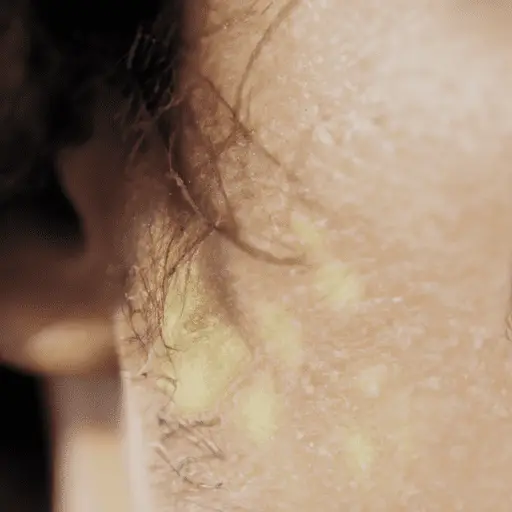Performing a Self-Exam for Skin Cancer
-
Table of Contents
- Performing a Self-Exam for Skin Cancer: A Comprehensive Guide
- Key Takeaways
- Introduction: The Importance of Self-Examinations for Skin Cancer
- Understanding the ABCDE Rule
- Performing the Self-Exam
- Tracking Changes Over Time
- The Role of Professional Skin Checks
- FAQ Section
- 1. How often should I perform a self-exam for skin cancer?
- 2. What should I do if I find a suspicious mole or skin change?
- 3. Can skin cancer appear on parts of the body not exposed to the sun?
- 4. Are certain people more at risk for skin cancer?
- 5. Can skin cancer be prevented?
- Conclusion: The Power of Prevention and Early Detection
- Review of Key Takeaways
Performing a Self-Exam for Skin Cancer: A Comprehensive Guide

[youtubomatic_search]
Key Takeaways
- Regular self-examinations for skin cancer can lead to early detection and improved outcomes.
- Understanding the ABCDE rule can help identify suspicious moles or skin changes.
- It’s important to examine all areas of the body, including less obvious places like the scalp and between the toes.
- Photographing and tracking changes in moles over time can aid in detection.
- While self-exams are crucial, they do not replace professional skin checks by a dermatologist.
Introduction: The Importance of Self-Examinations for Skin Cancer
According to the Skin Cancer Foundation, one in five Americans will develop skin cancer by the age of 70. This statistic underscores the importance of regular skin self-examinations. Early detection of skin cancer, particularly melanoma, can significantly improve the prognosis and reduce treatment-related morbidity. This article provides a comprehensive guide on how to perform a self-exam for skin cancer.
Understanding the ABCDE Rule
The ABCDE rule is a simple guide to recognize the warning signs of melanoma, the deadliest form of skin cancer. It stands for Asymmetry, Border, Color, Diameter, and Evolving. Any changes in these characteristics or a mole that stands out from others should prompt a visit to a dermatologist.
Performing the Self-Exam
Performing a self-exam for skin cancer involves systematically checking all areas of your body for any changes or abnormalities. This includes less obvious places like the scalp, between the toes, and under the nails. Using a mirror can help examine hard-to-see areas. It’s also beneficial to have a partner or family member check areas that are difficult to see, such as the back.
Tracking Changes Over Time
Photographing moles and tracking their changes over time can be a useful tool in early detection of skin cancer. There are several apps available that can help with this process. However, it’s important to remember that these tools should not replace a professional skin check.
The Role of Professional Skin Checks
While self-exams are crucial, they do not replace professional skin checks by a dermatologist. The American Academy of Dermatology recommends a yearly skin exam for adults. More frequent checks may be needed for those with a history of skin cancer or other risk factors.
FAQ Section
1. How often should I perform a self-exam for skin cancer?
The American Academy of Dermatology recommends performing a self-exam once a month.
2. What should I do if I find a suspicious mole or skin change?
If you find a suspicious mole or skin change, it’s important to make an appointment with a dermatologist as soon as possible.
3. Can skin cancer appear on parts of the body not exposed to the sun?
Yes, skin cancer can appear on any part of the body, not just those exposed to the sun.
4. Are certain people more at risk for skin cancer?
Yes, people with fair skin, a history of sunburns, a family history of skin cancer, and certain genetic disorders are more at risk.
5. Can skin cancer be prevented?
While not all skin cancers can be prevented, you can significantly reduce your risk by protecting your skin from the sun, avoiding tanning beds, and performing regular self-exams.
Conclusion: The Power of Prevention and Early Detection
Performing regular self-exams for skin cancer is a powerful tool in the early detection and prevention of this common disease. By understanding the ABCDE rule, checking all areas of the body, tracking changes over time, and seeking professional skin checks, individuals can play an active role in their skin health. Remember, early detection is key to successful treatment.
Review of Key Takeaways
- Regular self-examinations for skin cancer can lead to early detection and improved outcomes.
- Understanding the ABCDE rule can help identify suspicious moles or skin changes.
- It’s important to examine all areas of the body, including less obvious places like the scalp and between the toes.
- Photographing and tracking changes in moles over time can aid in detection.
- While self-exams are crucial, they do not replace professional skin checks by a dermatologist.
[youtubomatic_search]


